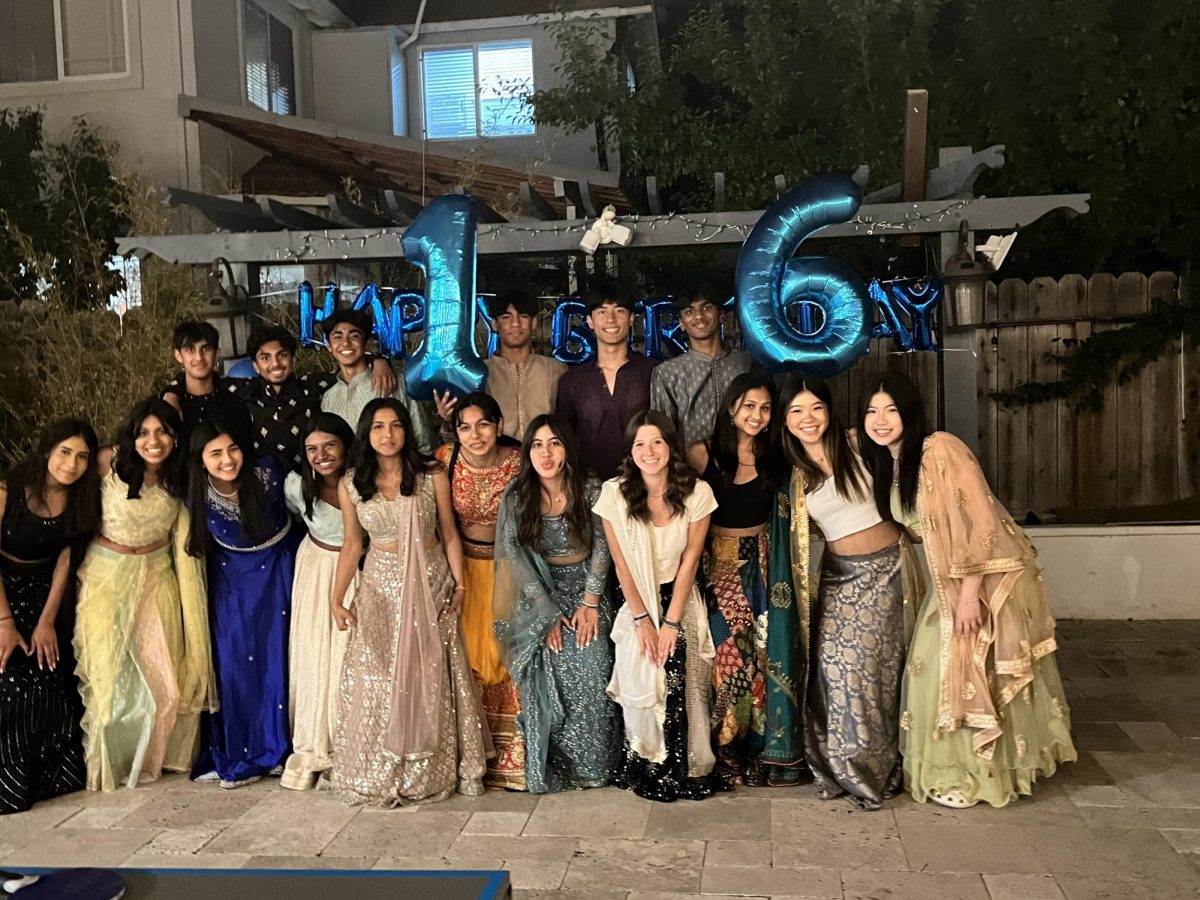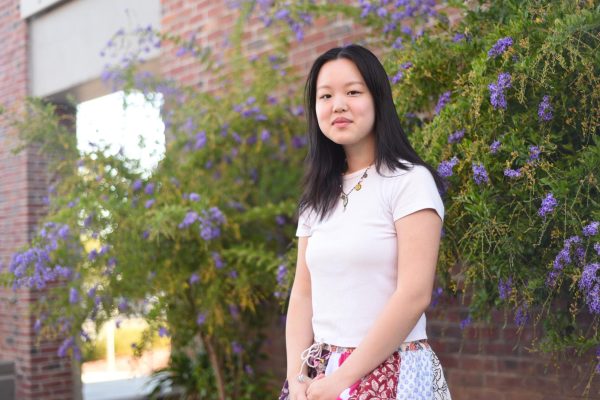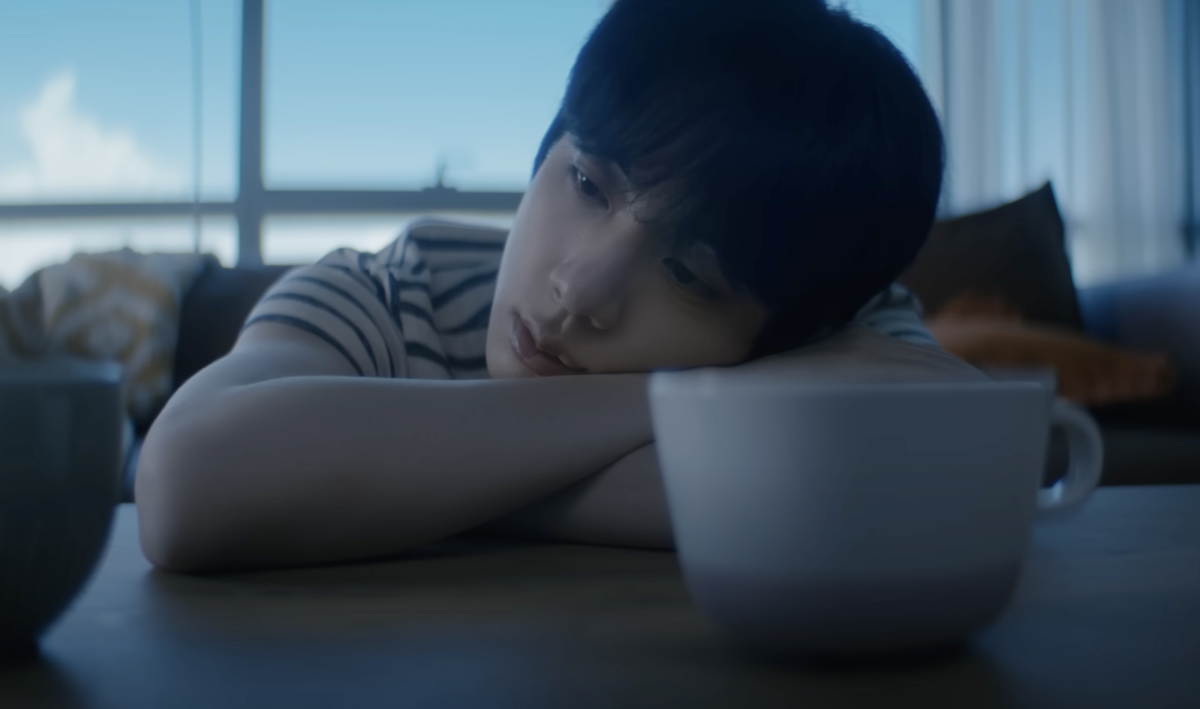Taking one last glance in the mirror, junior Siyona Kathuria was pleased with her outfit — the deep teal of the embroidered skirt paired with the familiar feeling of the delicate cloth draped over her shoulders completed a Lehenga, an outfit traditionally worn by Indian women. It was the morning of Kathuria’s sweet 16 and she had made the request that all her guests, regardless of ethnicity, wear traditional Indian clothing for the occasion. Though unconventional, Kathuria recalls the delight she experienced as she was able to share her Indian heritage with the people in her life.

“Having everyone wear traditional clothing highlights your sense of culture and you’re able to feel more in tune with that,” Kathuria said. “Especially being born in America, I feel a lot less connected with my heritage, but whenever these kinds of events happen, I feel a lot more proud of my culture.”
From daily pujas to auspicious Hindu holidays, Kathuria believes wearing traditional Indian clothing allows her to involve herself during any Indian event. Similarly, junior Srikar Deverakonda, who dons the traditional male attire of a Kurta during religious functions and family events, views any occasion inviting traditional Indian clothing as an opportunity to highlight his roots.
“It’s a really good way to express your identity as an Indian,” Deverakonda said. “Here in America, we aren’t able to practice all of our customs and there are stereotypes placed on us, but wearing traditional Indian-wear is one of the ways we can truly show others that we’re proud to be Indian.”
Having immigrated to the U.S. from India, physics teacher Sushma Bana views wearing traditional Indian clothing as an integral part of maintaining her connection with her home. She notes that Indian fashion follows changing trends much like Western fashion, allowing her to feel more integrated into the culture when pursuing it.
“Subconsciously, people need that connection with their roots,” Bana said. “Living here, people wear traditional clothes because it makes you feel closer to home and makes you celebrate that part of your personality. It’s important to integrate that to celebrate who you are and where you came from growing up in this country. What you wear is part of your identity, and you don’t want to lose that.”

With Indian clothing including various styles of pattern, embroidery and cut, Indian Americans traditionally design and order their own clothing from India, Kathuria explains. She particularly treasures the process of designing her Indian outfits with her mother, because her mother often explains the cultural significance of different colors and designs to her. With clothing-making steeped in Indian culture, it’s important to Bana to respect and support the art form.
“Buying the clothing is a way to keep that tradition alive,” Sushma said. “I feel like I’m a bridge between two countries and two cultures, and that’s a really important position. You don’t have to deny one part to embrace the other. First generation immigrants like me feel a very strong connection to where they came from, so instead of trying to deny our culture, there’s so much peace and happiness in embracing that you are part of both cultures.”

Deverakonda views gold jewelry as a significant part of Indian apparel, incorporating an authentic Indian gold ring he inherited from his father into his daily wardrobe. The act of wearing and purchasing gold jewelry carries spiritual implications. Many Indians who follow Hinduism consider it a good omen and pass down the teaching that gold possesses the ability to fend off evil spirits. Especially with Hindu scriptures often depicting gods and deities adorned in gold, Devarakonda says gold jewelry is part of Indian fashion and art.
In addition to jewelry, many Hindu Indians incorporate traditional customs into the way they dress, such as by adding a tiki, a red mark placed on one’s forehead for a prayer. Deverakonda recalls instances of non-Indian peers reacting to his tika negatively and often feels his culture is perceived skeptically due to its distinctive appearance. Kathuria seeks to combat negative perceptions by creating a better understanding and appreciation of Indian culture within her friend group by lending her Indian clothes to her non-Indian friends.
Bana feels that with the substantial Indian American population in the Bay Area, she is able to embrace wearing Indian clothing daily without fear of judgment. However, she acknowledges that places outside of the Bay Area may not be as accepting.
“I have become so used to being accepted and not feeling conscious about what I’m wearing,” Bana said. “But you travel just a little bit further and people will [talk] as if you are wearing a costume. This is not a costume. This is my day-to-day clothing. The prejudice comes out when they see you in that kind of clothing.”
As elements of traditional Indian clothing become more prominent in Western fashion, Deverakonda emphasizes the importance of understanding the boundary between cultural appreciation and cultural appropriation. Kathuria agrees that while participating in Indian culture through wearing traditional clothing is a welcomed concept, proper understanding of the context and cultural significance while doing so is important for it to be considered appreciation. Deverakonda cites an example of offensive appropriation when pop-singer Rihanna wore a pendant depicting the Hindu god, Ganesh, during a lingerie shoot.
“I personally think it’s really nice when people are wearing Indian clothing, but there is a limit, of course,” Devarakonda said. “Rihanna’s shoot was not OK because you can’t wear our gods in that situation, but wearing Indian clothing is honestly a joyous thing because Indian clothes are really beautiful and everyone should be allowed to wear them at appropriate times.”
Bana echoes Devarakonda’s sentiment and supports those who wear Indian clothing to celebrate and learn about Indian culture. She encourages people to do so to progress toward being more aware of different cultures.
“As an immigrant, I feel really happy that people are showing that the responsibility to learn and assimilate is not just on me,” Bana said. “It makes people more human. It’s my responsibility to teach people about my culture, so I think we have to find that common ground where we can all coexist and appreciate each other’s cultures and identities. We’re learning from each other and embracing parts of our culture, and we should not be afraid of that.”











